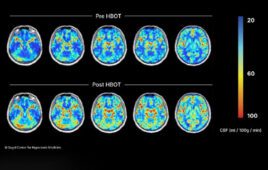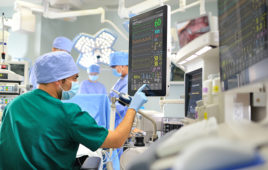Researchers have found a plasma protein in blood that could help develop a new method for making wound-healing tissue scaffolds.
The scaffold can be attached or detached from a surface for tissue studies or direct applications to the body. This research could be pertinent to the future use in wound healing and tissue engineering.
Professor Dorothea Brüggemann, lead author from the University of Bremen, says, “The protein we used is called fibrinogen. It is an extracellular glycoprotein found in blood plasma and plays a major role in wound healing by assembling into a fibrous network to form a provisional extracellular matrix (ECM) that helps with wound closure.”
Fibrinogen is most often processed into hydrogels and fibrous scaffolds for cell culture and tissue engineering applications. Existing ways of doing this, such as electrospinning or the preparation of fibrin hydrogels, use organic solvents, high electric fields, or enzymatic activity. All of these processes change the molecular structure or native protein functions of fibrinogen.
In order to solve this, the team wanted to see if they could develop a simple and controllable way to make 3D scaffolds while retaining its properties.
“For the first time, we were able to assemble fibrinogen into dense, three-dimensional scaffolds without using high voltages, organic solvents or enzymatic activity,” says Professor Brüggemann. “Our biofabrication process can be controlled simply by adjusting the fibrinogen and salt concentration, and the pH range.”
The dimensions of the scaffolds reached diameters in the centimeter range and achieved a thickness of several micrometers. With 100 to 300 nm, the diameters for the self-assembled fibers were in the range of native ECM fibers and fibrin fibers in blood clots.
“This novel class of fibrinogen nanofibers holds great potential for various biomedical applications. For example, in future studies on blood coagulation our immobilized fibrinogen nanofibers could provide a valuable in vitro platform for initial drug screening,” says Professor Brüggemann. “On novel wound healing applications, it will be highly interesting to study the interaction of fibroblasts and keratinocytes with our free-standing fibrinogen scaffolds.”




